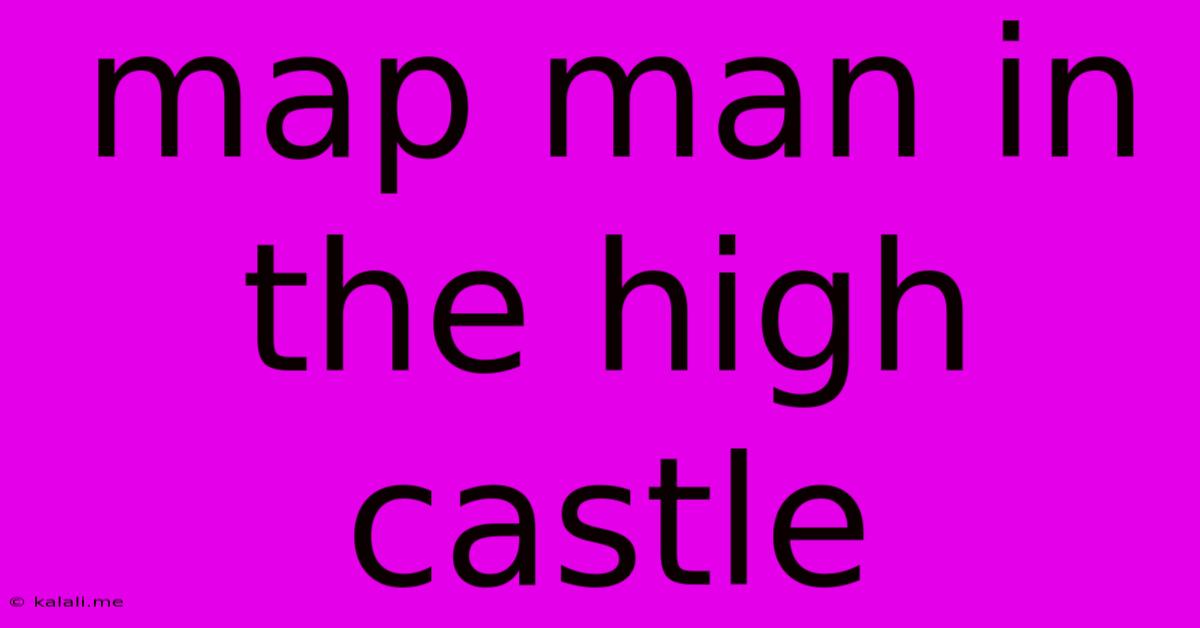Map Man In The High Castle
Kalali
May 30, 2025 · 3 min read

Table of Contents
Navigating the Alternate History of The Man in the High Castle
The Man in the High Castle, Philip K. Dick's seminal novel and its subsequent Amazon Prime Video adaptation, presents a chillingly realistic alternate history where the Axis powers won World War II. This article delves into the core themes, characters, and enduring impact of this dystopian masterpiece, exploring its relevance to contemporary anxieties.
The story unfolds in a fractured America, divided between the Greater Japanese Empire (controlling the Pacific Coast) and the Nazi Reich (dominating the East). The neutral zone in the Rocky Mountains becomes a haven for resistance, a simmering pot of rebellion against the oppressive regimes. At the heart of the narrative is the mysterious Grasshopper, a film reel depicting an alternate reality where the Allies won the war – a powerful symbol of hope and a catalyst for the central conflict. The existence of this film throws the very foundation of the established order into question, forcing characters to confront the nature of reality itself.
Key Themes Explored in The Man in the High Castle
-
The Nature of Reality: The film reel's existence challenges the very fabric of the characters' reality, forcing them to question the truth and the potential for alternate histories. This exploration of subjective experience resonates deeply with modern discussions around misinformation and the malleability of truth in a digital age.
-
Totalitarianism and Oppression: The novel masterfully portrays the insidious nature of totalitarian regimes, showcasing the pervasive surveillance, propaganda, and systemic violence that characterize both the Japanese and Nazi occupations. This depiction serves as a stark warning against the dangers of unchecked power.
-
Resistance and Rebellion: Despite the overwhelming oppression, pockets of resistance emerge, fueled by hope and a yearning for freedom. The characters' struggles to maintain their humanity and fight for a better future highlight the enduring human spirit in the face of adversity.
-
The Power of Art and Propaganda: Both the Grasshopper film and the pervasive Nazi and Japanese propaganda demonstrate the power of art and media to shape perception and control populations. This aspect resonates with today's discussions about the influence of media and its role in shaping public opinion.
-
Moral Ambiguity and the Human Condition: The characters are not simply heroes or villains; they exist within a complex moral landscape, making difficult choices in a morally gray world. This adds layers of depth and complexity to the narrative, forcing the audience to engage with the difficult questions the story raises.
Key Characters and Their Roles
-
Juliana Crain: A young woman living in the neutral zone, Juliana becomes embroiled in the resistance movement after encountering the Grasshopper film. Her journey is one of self-discovery and moral growth as she navigates the treacherous political landscape.
-
Frank Frink: A skilled craftsman working in the neutral zone, Frank's skills become vital to the resistance. His relationship with Juliana provides an emotional core to the narrative, showcasing the human connection in a world defined by oppression.
-
John Smith: A high-ranking SS officer, Smith represents the ruthless efficiency and moral bankruptcy of the Nazi regime. His internal struggles and complicated family life add unexpected layers to his character, highlighting the human cost of power.
-
Tagomi: A Japanese trade official, Tagomi grapples with his conscience and the moral implications of his position within the oppressive regime. His internal conflicts showcase the complexities of living under a totalitarian system.
The Enduring Legacy of The Man in the High Castle
The Man in the High Castle remains relevant today because it explores timeless themes: the dangers of unchecked power, the importance of resistance, and the enduring power of hope. Its chillingly realistic portrayal of a dystopian future serves as a stark warning, prompting reflection on the fragility of democracy and the need for vigilance against totalitarianism. The novel’s exploration of alternate histories also resonates with contemporary fascination with speculative fiction and the possibilities of different historical paths. Its enduring popularity is a testament to its insightful exploration of human nature and the enduring struggle for freedom in a complex and ever-changing world.
Latest Posts
Latest Posts
-
How To Save Half A Banana
May 31, 2025
-
How Do You Fix A Shower Diverter
May 31, 2025
-
Why Didnt Zoro Use Haki On Monet
May 31, 2025
-
Old Testament Verses About Gentiles Being Saved
May 31, 2025
-
How Long Before You Can Paint Pressure Treated Wood
May 31, 2025
Related Post
Thank you for visiting our website which covers about Map Man In The High Castle . We hope the information provided has been useful to you. Feel free to contact us if you have any questions or need further assistance. See you next time and don't miss to bookmark.